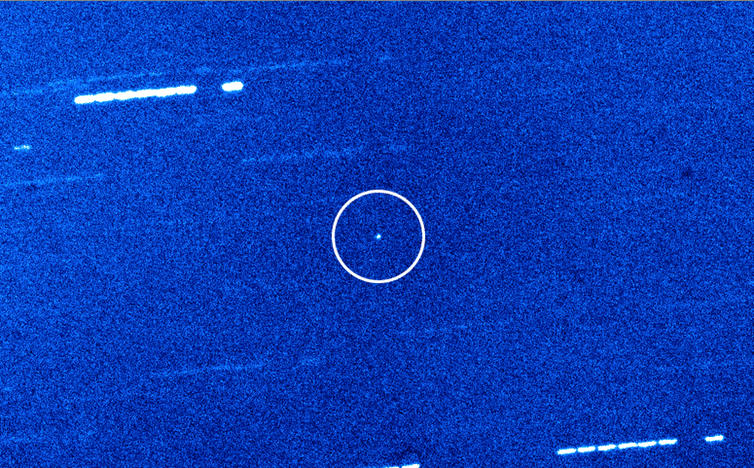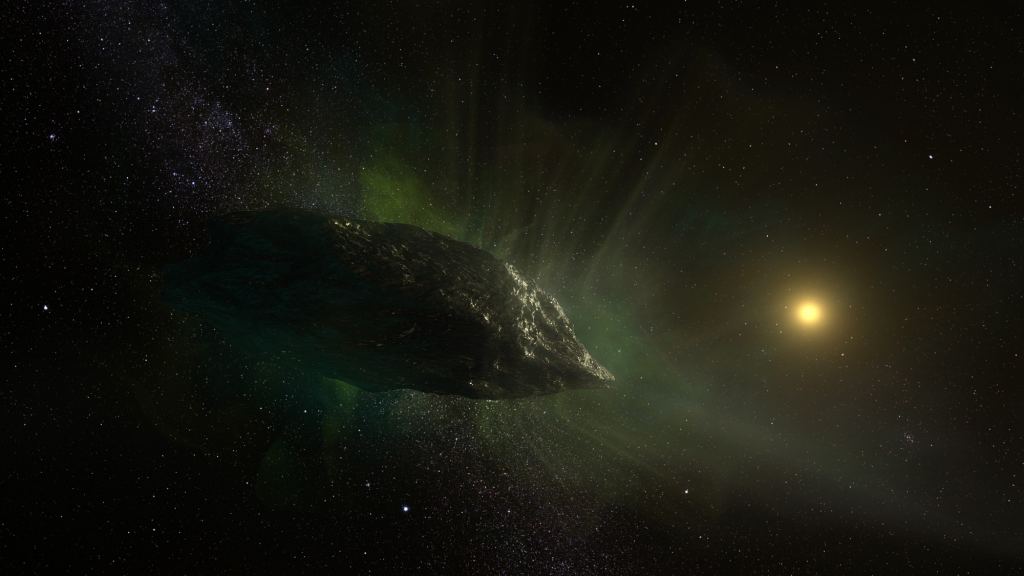In October 19th, 2017, the first interstellar object ever detected flew past Earth on its way out of the Solar System. Less than two years later, a second object was detected, an easily-identified interstellar comet designated as 2I/Borisov. The appearance of these two objects verified earlier theoretical work that concluded that interstellar objects (ISOs) regularly enter our Solar System.
The question of how often this happens has been the subject of considerable research since then. According to a new study led by researchers from the Initiative for Interstellar Studies (i4is), roughly 7 ISOs enter our Solar System every year and follow predictable orbits while they are here. This research could allow us to send a spacecraft to rendezvous with one of these objects in the near future.
The research that describes these findings was conducted by multiple researchers from i4is, a non-profit organization dedicated to the realization of interstellar flight in the very near future. They were joined by researchers from the Florida Institute of Technology, Harvard’s Institute for Theory and Computation (ITC), the University of Texas at Austin, the Technical University of Munich, and the Observatoire de Paris.

The study of ‘Oumuamua in October of 2017 set off a revolution in astronomy and the study of celestial objects. Not only was this an object that had formed in another star system, but its arrival and detection implied a large population of such objects. The detection of 2I/Borisov in 2019 confirmed what many astronomers already suspected – that ISOs enter our Solar System on a pretty regular basis.
In addition to being a physicist with the i4is (and the lead author on the study), Marshall Eubanks is the Chief Scientist of Space Initiatives Inc. and CEO of Asteroid Initiatives LLC. As he told Universe Today via email, the discovery of ‘Oumuamua and 2I/Borisov is significant in a way that cannot be understated:
“[J]ust by proving that they exist, it has had a profound impact, creating a field of study almost from nothing (a field that funding authorities are just beginning to recognize). Interstellar Objects provide us with the opportunity to study, and in the future literally touch, exobodies decades before the earliest possible missions to even the nearest stars, such as Proxima Centauri.”
This led to multiple proposals for missions that could rendezvous with future ISOs that were spotted passing through our system. One such proposal was Project Lyra, which researchers from the i4is shared in a 2017 study (with support from Asteroid Initiatives LLC). There’s also the ESA’s Comet Interceptor mission, which they plan to launch in 2029 to rendezvous with a long-period comet.

“We started working on potential missions to interstellar objects in 2017, right after the discovery of ‘Oumuamua and we initially rather focused on chasing that specific object, in contrast to Seligman & Laughlin, who focused on ISOs that might be discovered in the future,” said Eubanks. “The Comet Interceptor mission would fall into a similar category (build-and-wait).”
Given that ISOs formed in another star system, the opportunity to study them up close would offer scientists insight into the conditions that are present there. In fact, the study of ISOs is the next best thing to sending interstellar probes to neighboring star systems. Of course, any such mission entails a lot of technical challenges, not to mention the need for advance warning. As Eubanks explained:
“There are two basic types of missions here – plan and wait, or launch and wait, missions, such as the ESA Comet Interceptor, and chase missions, such as would be needed to reach 1I/’Oumuamua. It is very unlikely that any chase missions will be able to rendezvous with a retreating ISO – these will almost certainly be restricted to fast flybys. Rendezvous missions, missions to match velocities and orbit or land the ISO, will need advance warning.”
To illustrate, when astronomers first became aware of ‘Oumuamua, it was only after the object had already made its closest approach to the Sun (aka. perihelion passage) and made a close pass by Earth. Because of this, observers had only 11 days to conduct observations as it made its way out of the Solar System and was beyond the reach of their instruments.

In the case of 2I/Borisov, amateur astronomer and telescope-maker Gennadiy Borisov caught sight of it on August 30th, 2019, roughly three months before it reached perihelion (December 8th, 2019). But for future missions to rendezvous with them, it is imperative to know as much as possible about how often ISOs arrive and how fast they are traveling when they do.
For the sake of their study, Eubanks and his colleagues sought to place better constraints on these two variables. To do this, they began by taking into account how an interstellar object’s velocity is influenced by the local standard of rest (LSR) – the mean motion of stars, gas, and dust in the Milky Way in the vicinity of the Sun:
“We assume that ISOs come from or are formed with stars and their planetary systems, and that after they are on their own they share the same galactic dynamics as stars do. We use the two known ISOs, 1I/’Oumuamua and 2I/Borisov, and the efficiency of past and current astronomical surveys to estimate the number of these objects in the galaxy, and stellar velocity estimates from the Gaia mission to estimate the velocity spread we should expect.”
What they found was that in an average year, the Solar System would be visited by up to 7 ISOs that are asteroid-like. Meanwhile, objects like 2I/Borisov (comets) would be rarer, appearing around once every 10 to 20 years. They further found that many of these objects would be moving at velocities greater that of ‘Oumuamua – which was moving at over 26 km/s before and after picking up a boost from the Sun.

Knowing these parameters will help scientists prepare for possible rendezvous missions with ISOs, something which Eubanks and his colleagues covered in more detail in a previous study – “Interstellar Now! Missions to Explore Nearby Interstellar Objects.” As Universe Today reported at the time of its release, the study addressed a wider range of potential ISOs and the feasibility of reaching them.
In the meantime, this latest study provides basic information that will support the planning and implementation of these missions. In addition to Project Lyra and the ESA’s Comet Interceptor, there are numerous proposals for spacecraft that could rendezvous with interstellar objects (or even make the interstellar journey themselves).
These include Project Dragonfly, a small spacecraft and laser sail that was the subject of a conceptual design study hosted by the Initiative for Interstellar Studies (i4iS) in 2013. Another is Breakthrough Starshot, a concept put forward by Yuri Milner and Breakthrough Initiatives that also calls for a tiny spacecraft to be sent to Alpha Centauri using a lightsail and a powerful laser array.
This proposal has been articulated in recent years by Prof. Abraham Loeb and Prof. Manasvi Lingam. Whereas Leob is the founder of the ITC and Chair of the Starshot Advisory Committee, Lingham is a longtime researcher with the ITC and a co-author on the “Interstellar Now!” and this latest paper. In addition to going interstellar, these concepts have been proposed as a possible way of “chasing objects” that enter our Solar System.
One way or another, we will be peaking at other star systems soon! And knowing how to intercept and study the objects they periodically kick our way is a good way to start!
Further Reading: arXiv

